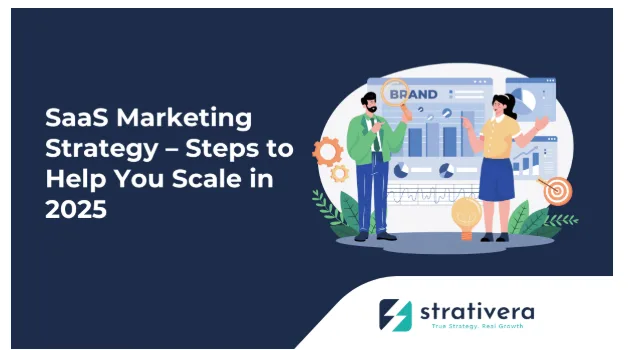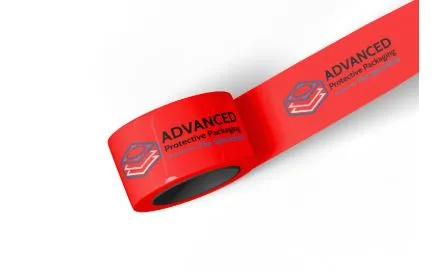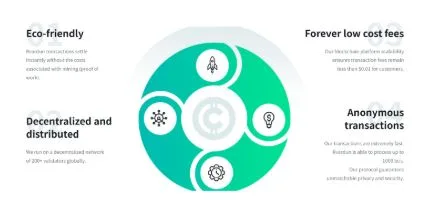What Is SaaS Marketing? (Plain-English Primer)
SaaS marketing is how subscription software companies attract, convert, activate, and retain customers. Unlike one-time purchases, SaaS thrives on recurring value: you win when users keep using (and paying) because they consistently see outcomes. That’s why a complete SaaS Marketing Strategy covers the whole journey—awareness, evaluation, onboarding, adoption, expansion, and advocacy.
Three truths define the craft:
- Retention is revenue. Churn quietly erodes MRR/ARR. Even small improvements compound over time.
- Onboarding is make-or-break. Shortening time-to-value (TTV) increases activation and reduces cancellations.
- Support is marketing. Every ticket, tutorial, and in-app guide either builds trust or breaks it.
The result: a modern SaaS Marketing Strategy looks beyond features and focuses on reducing friction, solving real jobs, and guiding customers to outcomes they care about.
Why a Strong SaaS Marketing Strategy Matters
A remarkable product can still stall without a clear path to market. A documented SaaS marketing audit Strategy ensures:
- Visibility → Profitability: You get found by the right buyers at the right time.
- Lower CAC, higher LTV: Better targeting and onboarding equal more efficient growth.
- Churn defense: Proactive success motions keep customers—and their revenue—around longer.
- Advocacy loop: Satisfied users write reviews, refer peers, and fuel brand momentum.
In crowded categories, strategy beats noise. It aligns product, marketing, and sales around measurable value creation.
SaaS Marketing Strategy Foundations
Build on three pillars:
- E-E-A-T (experience, expertise, authority, trust): publish genuinely helpful content, show proof, cite credible sources.
- Data discipline: capture events, define success metrics, monitor leading indicators (activation, feature adoption).
- Experimentation cadence: run small, high-leverage tests weekly; scale only what wins.
Define Your Ideal Customer Profile (ICP)
A tight ICP saves budget and accelerates word-of-mouth. Capture:
- Firmographics: industry, size, tech stack maturity.
- Roles & JTBD: who buys, who uses, and what job they’re hiring your tool to do.
- Triggers: compliance deadlines, legacy tool pain, hiring surges.
- Success signals: what “value realized” looks like in 7, 30, and 90 days.
Use this to guide messaging, channels, and demo paths.
Map Real Customer Pain Points
Go beyond assumptions:
- Interviews & VOC: 10–15 structured conversations reveal language and objections.
- Behavioral data: analyze drop-off points, rage clicks, support categories.
- Prioritize pains: rank by frequency × severity × solvability.
Turn insights into specific value propositions, not vague promises.
Craft a Defensible USP and Positioning
Your USP should answer: Why choose us now, and why stay?
Build a simple positioning stack:
- For [ICP], who need to [job],
- [Product] is a [category] that [unique differentiation],
- Unlike [alternative], we [proof-backed benefit].
Map feature → benefit → outcome → proof so your story lands.
Competitive Intelligence (Without Obsession)
Study competitors to find gaps, not to copy:
- SERP analysis: where do they rank? Which intents are uncovered?
- Pricing & packaging: identify value discontinuities you can exploit.
- Feature audit: decide when to meet parity vs. when to leapfrog with a novel workflow.
Focus on owning a distinctive narrative.
Set SMART, Revenue-Linked Goals
Tie goals to revenue impact:
- North star: activated accounts reaching first value in ≤7 days.
- Leading indicators: demo-to-trial, trial-to-paid, expansion adoption.
- Targets: e.g., reduce gross churn from 6% → 4% in 2 quarters; increase review velocity to 30/month.
Document owners, timelines, and measurement plans.
Retention First: Churn Reduction as Growth
Churn reduction is a growth lever, not a back-office KPI:
- Health scores: product usage, seat utilization, support sentiment.
- Proactive outreach: CSM nudges before renewal risk appears.
- Education loops: in-app tips, webinars, and lifecycle emails that teach power features.
- SLAs and fast resolution: public complaints demand swift, empathetic action.
Happy customers compound—through renewals, expansions, and referrals.
Customer Success & Support that Scales
Build a repeatable success motion:
- Playbooks: onboarding checklists, 30/60/90-day reviews, QBRs.
- Self-serve: searchable docs, templates, how-to videos, and AI chat assistants.
- Feedback ops: route product feedback to a transparent roadmap.
Support is part of your brand. Treat it as a differentiator.
UX as the New SEO
Search engines reward engagement—and users reward clarity:
- Friction audits: log-in to aha! in the fewest steps.
- Activation milestones: celebrate first success (imports, integrations, first report).
- Task completion telemetry: fix where users stall.
Better UX raises conversions and rankings. Win twice.
Content Marketing Engine
Content is your trust machine:
- Topic clusters: one pillar (e.g., “Revenue Operations”) + related how-tos.
- Formats: guides, checklists, calculators, teardown videos, customer stories.
- Distribution: social snippets, partner newsletters, communities, sales enablement.
- GEO (Generative Engine Optimization): structure content so AI assistants can surface your brand (clear headings, concise answers, schema).
Quality beats volume—but consistency beats bursts.
Search Engine Optimization (SEO) for SaaS
Practical steps:
- Intent mapping: BOFU pages (pricing, comparisons), MOFU (solutions, use cases), TOFU (education).
- Technical health: speed, crawl budget, structured data, internal linking.
- Refresh cadence: update winners quarterly; prune or consolidate thin pages.
- Programmatic SEO (with care): scalable comparison pages aligned to genuine intent.
Remember: SaaS Marketing Strategy content must be genuinely helpful to rank—and to convert.
Paid Acquisition: PPC + Social
Paid unlocks speed and insight:
- BOFU keywords: “best [category] software,” “[competitor] alternatives,” “[category] pricing.”
- Competitor campaigns: nuanced copy focused on your unique strengths.
- Retargeting: bring back evaluators with proof assets (case studies, ROI calculators).
- LinkedIn precision: target by role, skills, groups; promote high-value content (webinars, reports) rather than just homepages.
Use PPC data to inform SEO topics and messaging.
Email & Marketing Automation
Email powers activation and expansion:
- Onboarding series: day 0–7 focus on one task per email—tight, visual, actionable.
- Lifecycle triggers: celebrate milestones; nudge incomplete integrations.
- Reactivation: behavior-based win-back sequences for idle trials and dormant accounts.
- Newsletters: teach, don’t pitch. Curate insights and product tips your audience anticipates.
Automation = relevance at scale.
Social Proof: Reviews & Referrals
Make trust visible:
- Review ops: ask at peak moments (successful import, NPS 9–10).
- Respond publicly: thank, clarify, and fix—future buyers are watching.
- Referral engine: clear reward, easy mechanics, ethical guardrails.
Listings on G2, Capterra, and TrustRadius help buyers shortlist you faster.
Conversion Rate Optimization (CRO)
Turn interest into action:
- Heuristics: clarity, relevance, friction removal, risk reversal.
- Pricing page: transparent tiers, comparison table, money-back guarantee, social proof.
- Micro-conversions: add to calendar for demo, save pricing, interactive tour.
- A/B testing discipline: one hypothesis at a time; run to significance; ship learnings.
CRO + quality traffic = lower CAC and faster growth.
Account-Based Marketing (ABM)
When deal sizes grow, go precise:
- Target account lists: use firmographic filters and intent signals.
- 1:1 experiences: personalized landing pages, tailored demos, executive briefs.
- Tight alignment: marketing warms, sales advances, success expands.
- Enablement: outreach templates, competitive talk tracks, ROI models.
ABM is craftwork—resource intensive but powerful.
Launch & Momentum: Product Hunt + Communities
For new features or products:
- Pre-launch runway: teaser posts, maker stories, early adopters list.
- Launch day ops: fast replies, demo video, crisp visuals, clear use cases.
- Afterburners: thank-you thread, follow-up offers, onboarding webinars.
Communities (Slack groups, forums, subreddits) can drive durable awareness beyond launch day.
Events: Webinars, Meetups, and Conferences
Blend scale and intimacy:
- Webinars/Meetups: focused topics, live Q&A, downloadable assets.
- Conferences: high-intent conversations; book meetings in advance; measure sourced + influenced pipeline.
- Post-event: rapid follow-up with personalized recaps and next steps.
Events work best with a coordinated sales motion.
Strategic Partnerships & Integrations
Multiply reach and value:
- Co-marketing: joint webinars, case studies, newsletters.
- App marketplaces: build where your ICP already lives.
- Partner programs: clear incentives, enablement kits, shared metrics.
Integrations make your product stickier—and open new acquisition channels.
Leverage AI Across the Funnel
Practical AI wins:
- Personalized onboarding: in-app guidance based on behavior.
- Predictive churn: flag risky accounts for proactive outreach.
- Content ops: outlines, briefs, and QA to scale quality, not fluff.
- GEO: structure answers and snippets so AI assistants can cite you.
Used thoughtfully, AI improves efficiency and customer experience.
Pricing, Packaging, and Free Trials
Turn pricing into a growth lever:
- Trial design: time-boxed with concierge support, or usage-based to first value.
- Paywalls: let users “feel” value before requesting payment details.
- Packaging: align tiers to outcomes and roles; avoid hidden fees.
- Discounts: use sparingly; prefer value-add bundles.
Test trial-to-paid flows relentlessly.
Analytics & Measurement Cadence
Run the business on facts:
- Weekly dashboard: signups, activation, TTV, trial-to-paid, churn, NRR.
- Experiment log: hypothesis → setup → result → decision → next test.
- Attribution sanity: mix model + qualitative feedback from sales calls.
Decisions age fast—refresh them on a schedule.
Common Pitfalls: Random Acts of Marketing
Avoid the busywork trap:
- Too many channels, too little depth
- No owner for activation or onboarding
- Launching without follow-up sequences
- Ignoring churn until renewal month
Adopt focus discipline: fewer bets, higher quality, measured weekly.
Case Snapshots & Quick Wins
- Faster TTV: pre-loaded templates + integration checklist → 20–40% higher activation.
- Support SLAs: public commitments + first-response under 2 hours → better NPS and review velocity.
- Review momentum: ask after milestone success → compounding social proof.
- Bundled integrations: co-marketing with ecosystem partners → new, high-fit leads.
FAQs: SaaS Marketing Strategy
1) What makes an effective SaaS Marketing Strategy?
Clear ICP, pain-led messaging, multi-channel acquisition, frictionless onboarding, proactive success, and a steady optimization cadence tied to revenue—not vanity metrics.
2) How do I reduce churn without a huge CS team?
Automate onboarding, build a searchable help center, add in-app tips, and set health-score alerts. Reserve humans for complex moments that change outcomes.
3) Should I run PPC if my domain authority is low?
Yes—start with BOFU keywords and retargeting. Use PPC data to inform SEO topics and landing page copy.
4) How long should my free trial be?
Time it to first meaningful value. If setup is complex, pair a 14–21 day trial with concierge onboarding or templates.
5) What review sites matter most for B2B SaaS?
G2, Capterra, and TrustRadius are common shortlisting hubs. Ask for reviews at “happy moments” and respond publicly with B2B SaaS marketing.
6) Is ABM worth it for early-stage startups?
If your ACV is high and your ICP is narrow—yes, but start small (a handful of accounts) with sales–marketing lockstep.
7) How does UX influence SEO?
Engagement metrics (time on page, bounce, pogo-sticking) and clearer pathways improve both rankings and conversions.
8) Where can I learn more about retention economics?
See Harvard Business Review and McKinsey for research on acquisition vs. retention economics and growth models:
- https://hbr.org/
- https://www.mckinsey.com/
Conclusion & Next Steps
Winning in SaaS means turning customer outcomes into a system: sharp ICP targeting, pain-first messaging, activation-focused onboarding, proactive success, review momentum, and a relentless testing habit. Use this guide to assemble your SaaS Marketing Strategy roadmap:
30-Day Action Plan
- Define ICP + top 5 pains; rewrite your positioning page.
- Map onboarding to first value; ship a 5-email day-0–7 sequence.
- Stand up BOFU PPC + retargeting; create a competitor-alt page.
- Launch review ops and a simple referral incentive.
- Build a weekly dashboard; schedule a standing growth review.
If you’d like expert help, Strativera can partner with your team to design and implement a sustainable, data-driven SaaS Marketing Strategy that compounds growth over time.





